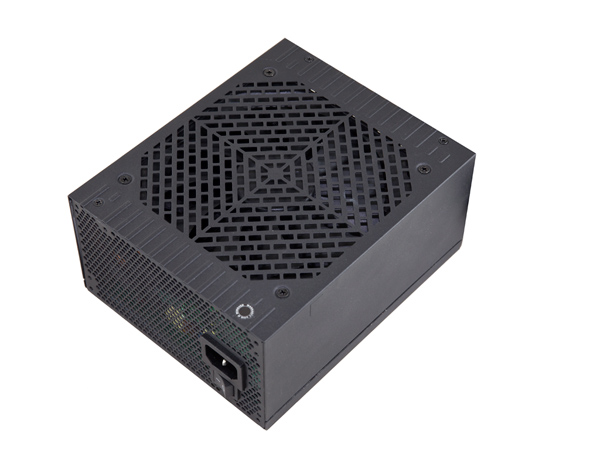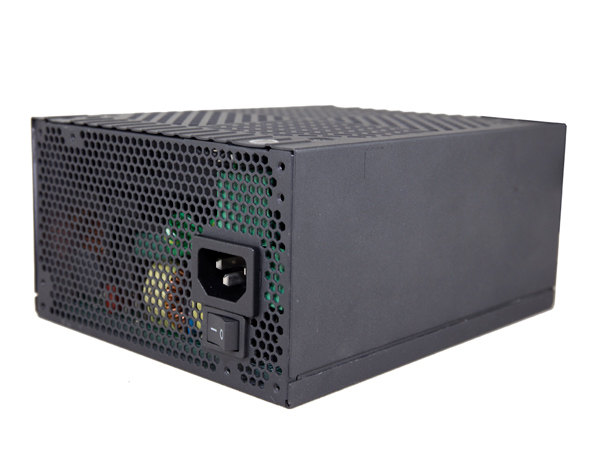Early Verdict
The new Capstone G1200 might offer a decent performance per dollar ratio, however its performance is only average and on top of that it is noisy. Based on the G1200 experience, the older Capstone PSUs are much better overall, despite of their age.
Pros
- +
Full power at 49 °C • Ripple suppression on the minor rails • +12V Performance in Advanced Transient Response tests • 5VSB efficiency • Decent performance per dollar • 8x PCIe & 2x EPS • Warranty
Cons
- -
Ripple at +12V • Load regulation • Noisy • Hold-up time • Inrush current • Not as efficient as other Gold units
Why you can trust Tom's Hardware
Rosewill Capstone-G1200 Power Supply Review
Rosewill initially partnered with Super Flower, which made the company's entry into the power supply market easier, since the first Rosewill PSUs featured very high performance-per-dollar ratios. However, a company cannot rely entirely on a single manufacturer, and the truth is that demand for Super Flower's services weighs on its ability to keep up. In addition, the prices of Super Flower's high-end platforms aren't as affordable as they used to be. When enthusiasts weren't as familiar with Super Flower, good performance and low prices brought new customers in. However, when a company no longer needs exposure, then it makes sense to raise prices, matching the competition.
Higher costs, coupled with the fact that Super Flower cannot meet excess demand any more, probably pushed Rosewill to approach Enhance Electronics for its new Capstone G line (even though the older Capstones employed Super Flower platforms).
While the older Capstones were split between modular models and those with fixed cables, the Capstone G line-up consists only of semi-modular units. Actually, only the main ATX cable is fixed; everything else is modular, so in fact these units are close to fully modular. The Capstone G PSUs come in six versions with capacities ranging from 550W to 1200W, covering much of the enthusiast market. Today we're looking at the 1200W model with a specific emphasis on whether the new Capstone is any better than its predecessor.
Specifications
Rosewill rates its latest effort for 80 PLUS Gold efficiency. In addition, thanks to a couple of DC-DC converters that regulate the minor rails, the PSU is compatible with the C6 and C7 sleep states that Intel's Haswell CPUs introduced. Unfortunately, the maximum operating temperature at which full power can be delivered continuously is limited t 40 °C. The ATX specification recommends at least 50 °C, and we are going to push the PSU above 45 °C during our testing. Thanks to the Over-Temperature Protection (OTP) that all mid- and high-end Enhance platforms feature, we won't have to worry about the PSU's health, even when we push it beyond its limits. Other protection features cover the basics we'd expect.
The physical dimensions and weight of the Capstone-G1200 are normal given its maximum power. We find compatibility with the ATX 2.3 spec since the PSU only employs one +12V rail. The more recent ATX specs require at least two +12V rails. Finally, the warranty is long enough at five years, while Rosewill's price is reasonable for a 1.2kW Gold-rated PSU.
Power Specifications
| Rail | 3.3V | 5V | 12V | 5VSB | -12V | |
|---|---|---|---|---|---|---|
| Max. Power | Amps | 25 | 25 | 100 | 3.5 | 0.3 |
| Watts | 150 | 1200 | 17.5 | 3.6 | ||
| Total Max. Power (W) | 1200 |
The single +12V rail is powerful, specified for 100A and easily supporting multiple graphics cards on an aggressively overclocked platform. The minor rails are strong as well with 150W combined maximum output. Meanwhile the 5VSB rail has enough juice to charge a tablet.
Cables And Connectors
| Description | Cable Count | Connector Count (Total) |
|---|---|---|
| Fixed | ||
| ATX connector 20+4-pin (720mm) | 1 | 1 |
| Modular | ||
| 4+4-pin EPS12V (600mm) | 2 | 2 |
| 6+2-pin PCIe (600mm+150mm) | 4 | 8 |
| SATA (500mm+145mm+145mm+145mm+145mm) | 3 | 15 |
| Four-pin Molex (500mm+150mm+150mm+150mm) / FDD (150mm) | 1 | 4 / 1 |
As we expect from a 1.2kW PSU, there are eight PCIe connectors, along with two EPS ones that are all available at the same time. The number of SATA connectors is also huge, while the four-pin Molex connectors are on a single cable, limiting their numbers.
Get Tom's Hardware's best news and in-depth reviews, straight to your inbox.
Strangely, the main ATX cable is much longer than the EPS ones. Usually it's the other way around, since the EPS sockets are farther away on most motherboards. Finally, the 24-pin ATX, PCIe and EPS cables use thicker 16-gauge wires for lower voltage drops, while the other leads employ 18-gauge wiring.
Power Distribution
Since this PSU features a single +12V rail, we do not have anything to say about its power distribution.
MORE: PSUs 101: A Detailed Look Into Power Supplies
MORE: How We Test Power Supplies
MORE: All Power Supply Articles MORE:
Power Supplies in the Forums
Current page: Rosewill Capstone-G1200 Power Supply Review
Next Page Packaging, Contents, Exterior And Cabling
Aris Mpitziopoulos is a contributing editor at Tom's Hardware, covering PSUs.
-
Giannis Karagiannis Quite low price for a 1200W unit but considering everything else I dont think its a good buy. Try better next time Rosewill...Reply -
Dark Lord of Tech Rosewill does have some Capstones that are great quality , The Super Flower models.Reply -
Dark Lord of Tech Also Enhance released a lot of nice V and VS series models for Cooler Master.Reply -
Aris_Mp Those older Capstones are EOL because they were older platforms which most likely aren't produced any more and on top of that Super Flower lately cannot meet demand, as the rumors say.Reply -
Dark Lord of Tech Super Flower is still pushing out a lot of units , I own 5 of he EVGA Super Flowers.Reply
The olser Capstones are solid , they are EOL , but were very good. -
DSzymborski Really disappointing to see Rosewill slide back - those older Capstones made by Super Flower were really quite nice and you could frequently get excellent deals on them and I made a couple of builds for people with the semi-modular gold 750s. Too bad.Reply -
MasterMace It's too bad, the previous Capstones were so nice. This makes me wonder if they should have slapped a lower rating on this unit, instead of overshooting for a Gold 1200Reply -
firefoxx04 I wish manufacturers didn't bother making crap power supplies for enthusiasts markets. The fact that they even sell is a huge problem.Reply -
Slobodan-888 LOL, ripple is fine. It is within ATX specifications which states that is is allowed up to 120 mVpp RMS on 12 V rail.Reply

